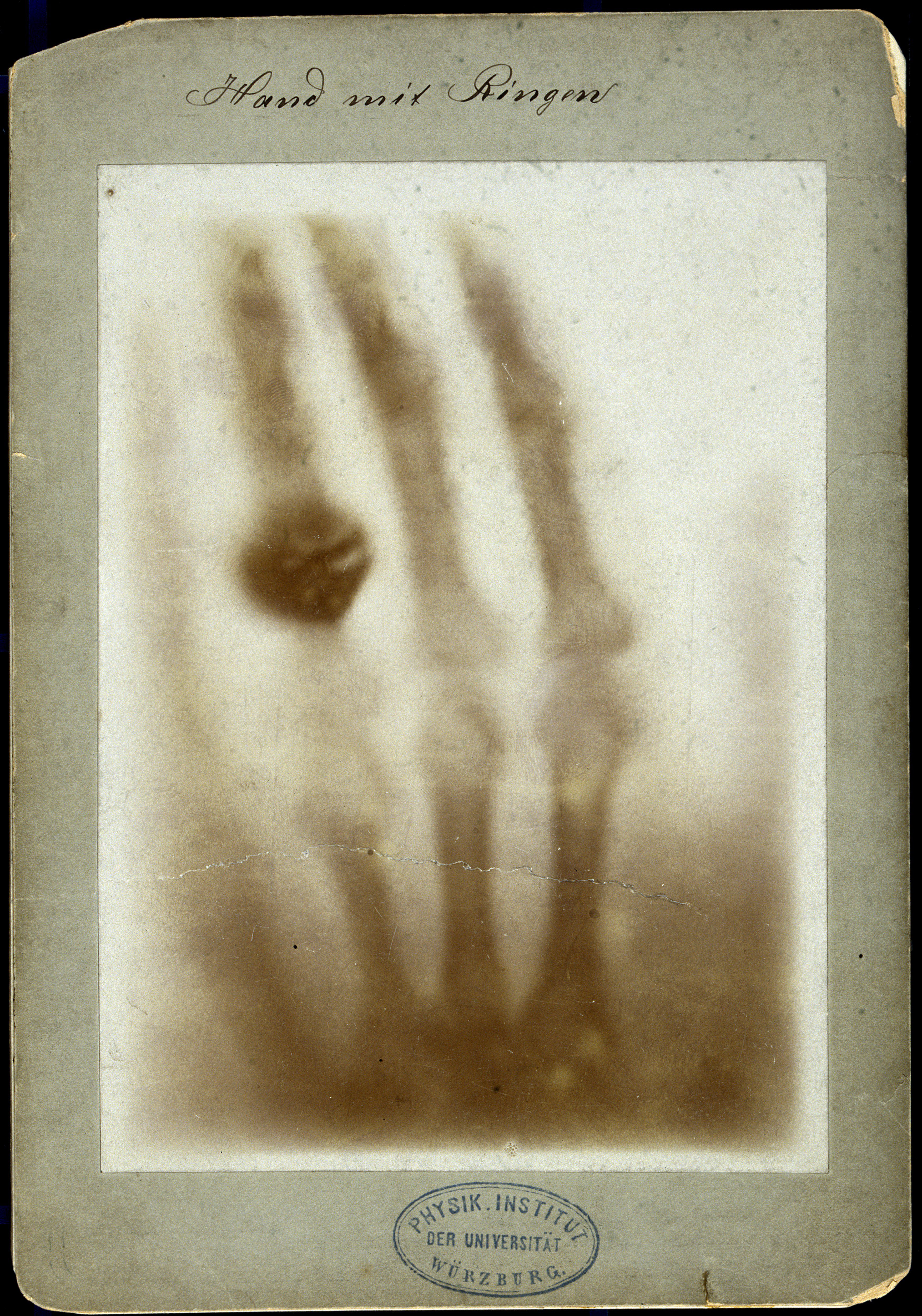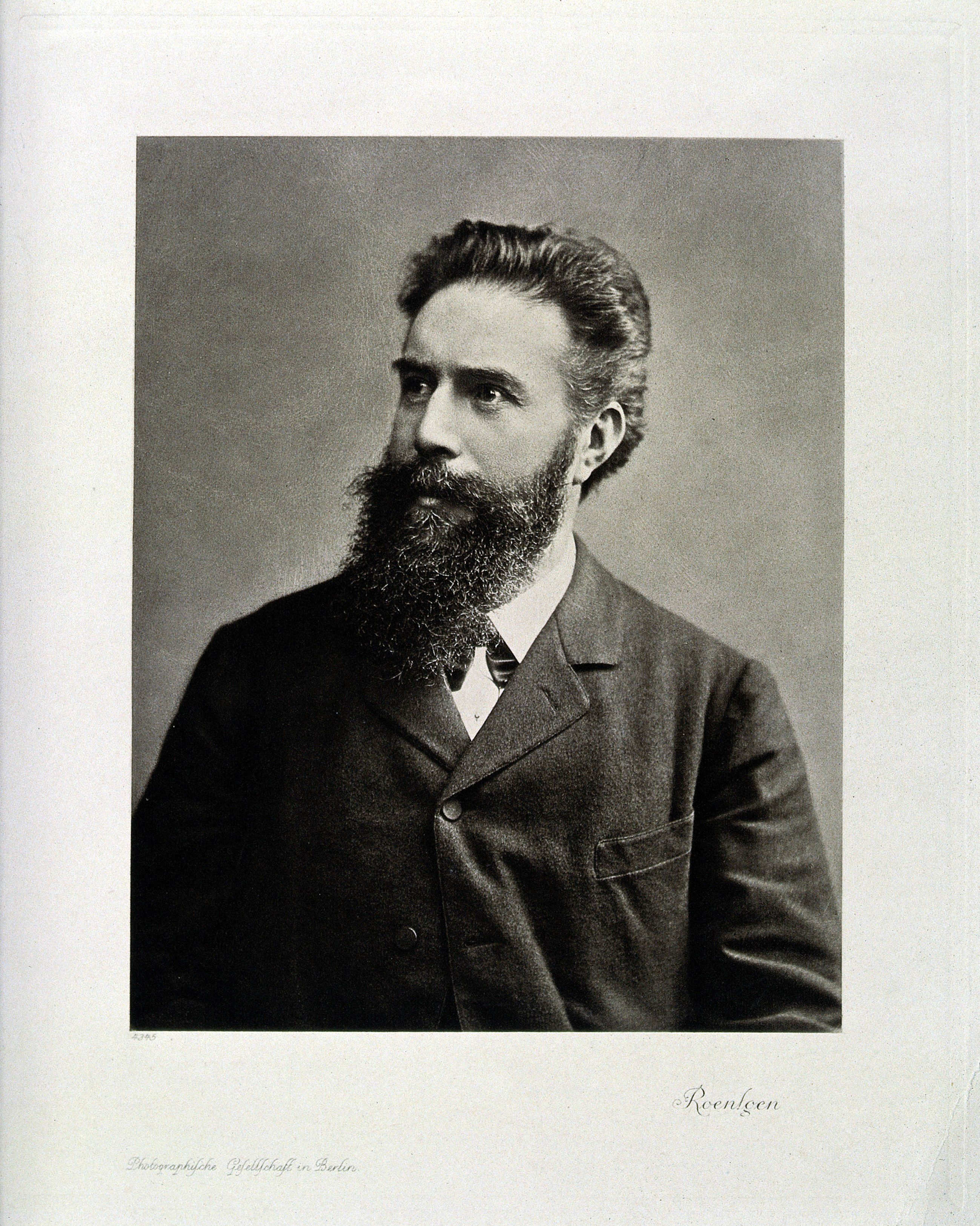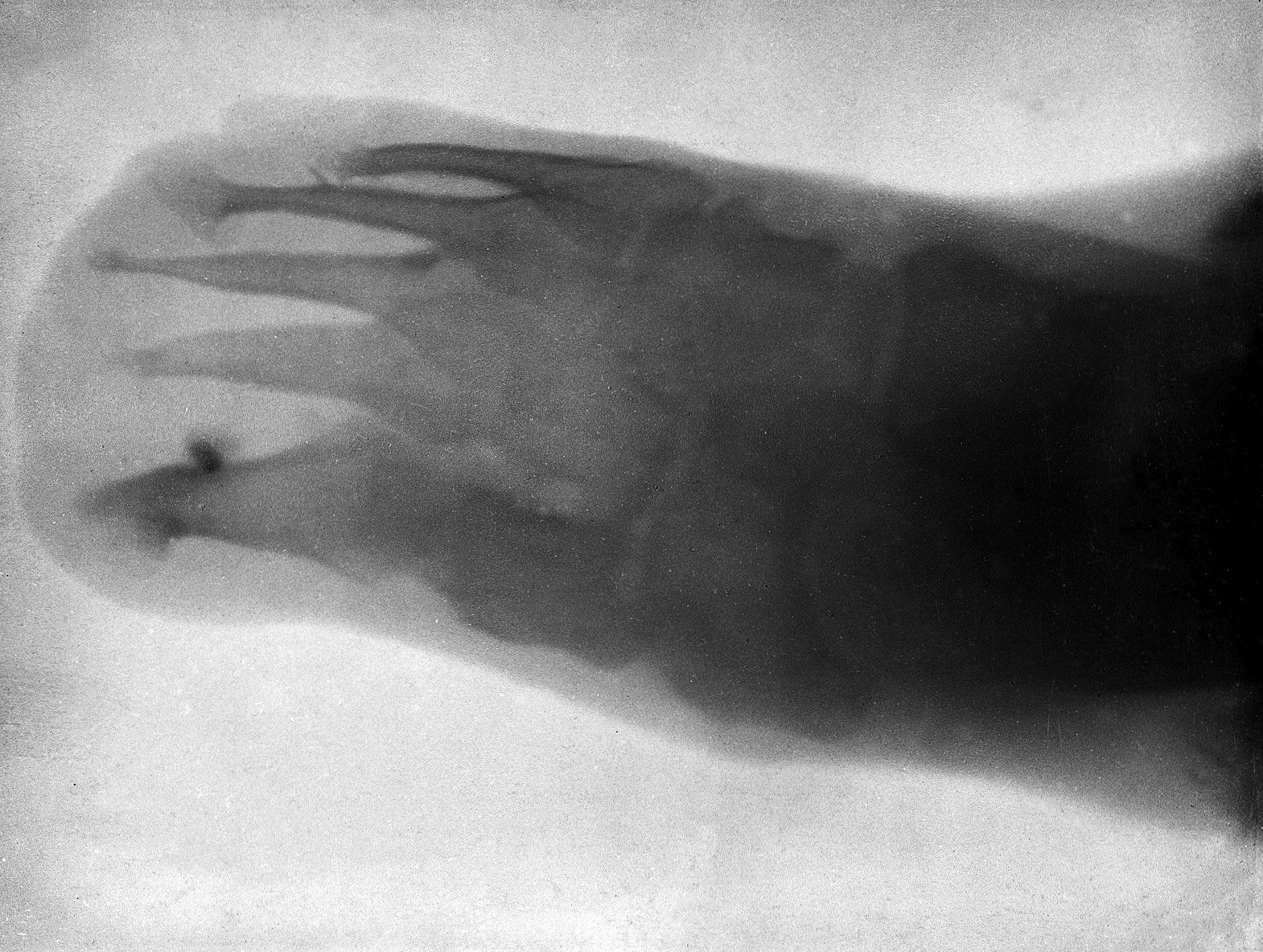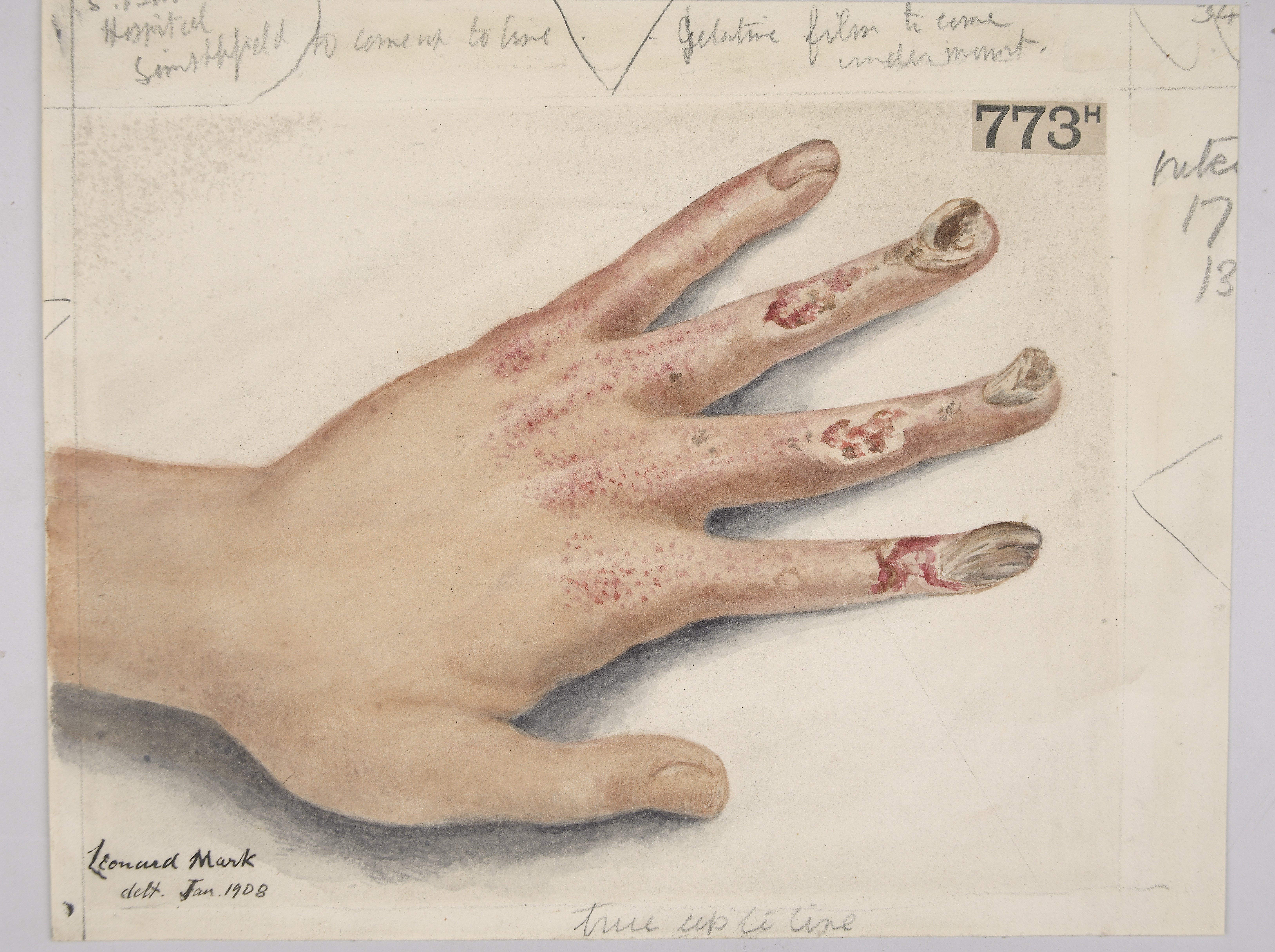The Existential Horror Created by the First X-Ray Images
“I have seen my death!”

When Anna Bertha Roentgen’s husband spent seven weeks obsessed in his lab in late 1895, she was supportive. She silently brought him hot meals when he forgot to eat, and otherwise left him to his work. And when he needed a hand, she patiently provided one. In fact, her left hand* became the subject of Wilhelm Conrad Roentgen’s most famous image, “Hand mit Ringen,” which helped him win the first Nobel Prize in Physics in 1901.
It is a ghostly picture of her hand, unlike any ever taken before, with long, shadowy finger bones and a large dark wedding ring. The image is the first radiograph, a photograph exposed by X-rays instead of light, ever taken. It was an image that sparked a craze for the invisible rays that could shine through the opaque and illuminate the inner workings of the human body, and it catapulted Wilhelm Roentgen to worldwide fame.

Those seven weeks that produced the image had started when Wilhelm noticed a strange light when he was fiddling with some Crookes tubes. Crookes tubes, glass tubes with a vacuum inside, were a popular scientific apparatus in the late 1800s. Researchers ran electricity through attached cathodes and anodes to create a stream of light called a cathode ray—made up of what we now know are electrons. Wilhelm was investigating something a colleague had noticed, that a small bit of aluminum could be used to redirect some of the cathode ray onto a fluorescent screen next to the tube, which would make the screen light up.
In early November, he repeated the experiment in the dark in his lab at the University of Würzburg in Germany. But then he noticed something happening far away from the Crookes tube. A screen coated in barium platinocyanide, the fluorescent material that was used on photographic plates, was sitting on a chair near the experiment, and every time Wilhelm turned on the electricity, the screen glowed. Not quite believing what he was seeing, he dedicated his time to rigorously testing and documenting the strange rays, which he called “X.” He put objects made from different materials on photographic plates and exposed them to X-rays, and found that the mysterious rays passed through some but not others. Eventually, a few days before Christmas, he asked his wife to help him in the lab. Anna held her left hand on a photographic plate for 15 minutes while Wilhelm beamed X-rays at it. According to legend, she said, “I have seen my death!” and never set foot in his lab again.

Anna may not have been receptive to seeing her own bones, but Wilhelm knew a few people who would be. He mailed copies of some of his images, along with a draft of his paper detailing the discovery, to fellow physicists at universities throughout Europe, including Arthur Schuster at the University of Manchester.
Schuster had dabbled in several different fields in physics, including magnetism, spectroscopy, and astronomy. When he received the paper in early 1896, he replicated the experiment in his own lab. He captured radiographs of hands, frogs, limb joints, even his six-year-old son’s foot. Schuster also clearly recognized the medical value of X-rays—his images from early 1896 include one of a bullet lodged in the base of a brain. Schuster’s experiments with X-rays also led him to the conclusion that the new rays were, in fact, the same as rays of light, but much more energetic due to a much shorter wavelength.

The potential medical applications are why Wilhelm Roentgen decided not to patent X-rays. The technology was quickly put to use by both the medical community and the general public. In the book Naked to the Bone, Bettyann Kelves describes “X-ray slot machines” that let customers see the bones in their hands. Because the parts needed to create X-rays were so easy to obtain, people could create the images in their homes. Kelves mentions one man who used a 10-hour exposure to create a radiograph of his wife’s broken hip.
The X-ray frenzy, however, didn’t anticipate the negative impact of the phenomenon. While X-rays are invisible, we know today that they aren’t harmless. The woman with the broken hip developed burns, as did other patients subjected to them, along with hair loss and blistering. Clarence Dally, an X-ray technician in Thomas Edison’s lab, was exposed to such high levels of radiation that he had to have both arms amputated, and later died of metastatic skin cancer at the age of 39. Fortunately, the doses needed for a modern radiogram are a fraction of what these early X-ray subjects endured, so there’s little to nothing to worry about from the modern version of the procedure.

Eventually scientists figured out how to measure the amount of radiation a person was exposed to when sitting for a radiograph. Wilhelm Roentgen became a household name after his discovery was published—radiographs were often called roentgenograms or roentgenographs. Those names didn’t stick, but the one for the unit of measurement for X-ray dosage, the roentgen, did. And in Germany, X-rays are still known as Roentgen rays.
* Note: Some sources differ on whether the first image depicts her left or right hand.































Follow us on Twitter to get the latest on the world's hidden wonders.
Like us on Facebook to get the latest on the world's hidden wonders.
Follow us on Twitter Like us on Facebook